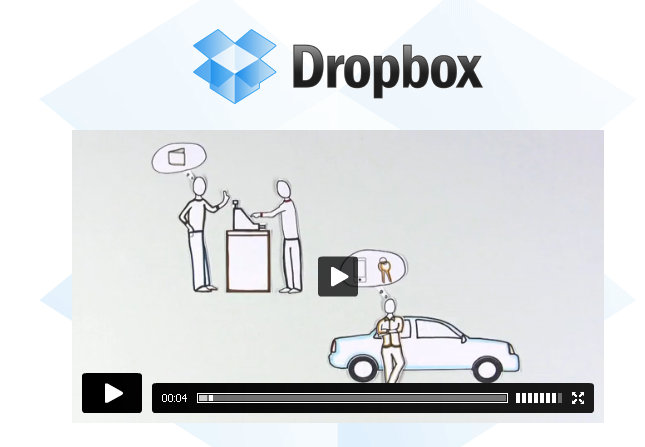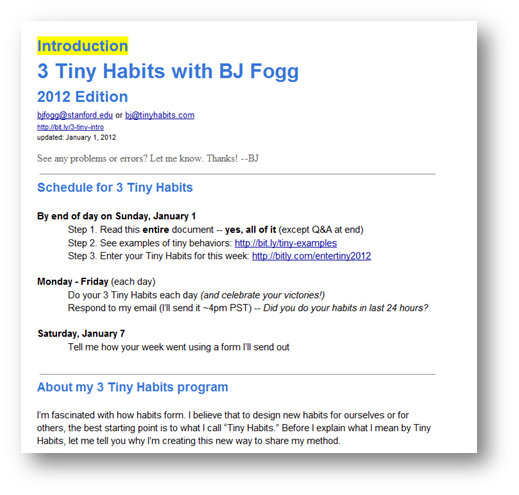You don’t want to waste your time and money building a product no one will want to use or pay for. So, first get out of the building and talk to your customers.
But there’s a world of difference between talk and action. What your customers say, and what they eventually do. Talking, and putting the product in their hands. And yes: asking money for it.
You want them to put their money where their mouth was.
Sure, but what if you do not have a product yet? This is where the minimum viable product comes to play.
A minimum viable product is “that product which has just those features and no more that allows you to ship a product that early adopters see and, at least some of whom resonate with, pay you money for, and start to give you feedback on”.
But why minimal? Because your time and money are severely limited. You want the biggest “bang for your buck”: maximum learning with minimal effort.
Here are 7 inspirational MVP examples to get you started this week.
#1 Explainer Video
Explainer video is a short video that explains what your product does and why people should buy it. Often a simple, 90 seconds animation. Using an explainer video as a minimum viable product has served Dropbox very well.
Before their launch, Dropbox had already got 5K subscribers, all based on their video.
Dropbox is a fast growing company with funding in excess of $250 million, ~80 employees, 50 million users, and $240 million in revenue. Drew Houston, the founder and CEO, has turned down an offer from Steve Jobs to buy their company.
But how did they begin?
They started with an explainer video – a 3m screencast published on Hacker news. The screencast was enough to give the early adopters a hint of the product experience. And enough to get many smart people to give them “the same feedback as if putting a product in their hand”, says Drew on sllconf 2010.
New version of the video had the waiting list (of emails) jump from 5000 to whopping 75000 in one single day.
The explainer video served them that well that it is almost the only thing still featured on their landing page.
#2 A Landing Page
A landing page is a web page where visitors “land” after clicking a link from an ad, e-mail or another type of a campaign.
The job of a landing page is to quickly communicate the value of your offering, diffuse objections, and call the visitor to action.
Landing pages are where the excrement hits the fan. Based upon your interviews, surveys, and your product development you build a landing page.
Wait a minute, isn’t a landing page a marketing instrument?
Sure it is. But it is also an MVP. The landing page validates your value proposition, product-solution fit, sales argumentation and can even validate your pricing.
And all that in an environment of brutal and merciless honesty: anonymous Internet browsing.
Here is what to do:
- Craft your landing page
- Set up a Google AdWord campaign and drive traffic to your new landing page. Even here you can let the AdWord engine rotate different messages and test what works best on your prospects
- Set up Google Analytics. The most important thing to measure is conversions – percent of visitors that sign up (or perform another desired action)
- Set up a chat to make it easy for the visitors to raise questions
- Set up a service like Qualaroo to survey your visitors
#3 Wizard of Oz MVP
A “Wizard of Oz” MVP is when you put up a front that looks like a real working product, but you manually carry out product functions. It’s also known as “Flinstoning”.
Don’t mind the people behind the curtain
Zappos shoes is the biggest online shoe retailer, with annual sales exceding $1 billion. In his Lean Startup book, Eric Ries describes how the founder started with a Wizard of Oz product.
The founder didn’t start by stocking up big amounts of shoes and investing in an e-commerce backend. Instead, he went to local shoe shops. He would asked the owner’s permission to take photos of shoes and put them online. Once the orders started flown in, he went to the shop, bought the pair that was ordered, shipped it, handled payments, returns… all of it himself, and by hand.
This was not a scalable business.
But it was an experiment designed focused on answering one question: is there already sufficient demand for a superior online shopping experience for shoes? And it allowed the founder to validate most of his assumptions with a very little investment.
#4 Concierge MVP
Instead of providing a product, you start with a manual service. But not just any service! The service should consist of exactly the same steps people would go through with your product.
Give your customers the VIP treatment in exchange for their feedback
Food on the table provides easy weekly recipe and grocery lists based on sales at your store. They need lots of stuff to make this work. A list of stores and groceries, weekly updates on sales, recipes, algorithms to match your preference to recipes to promotions…
It’s a lot.
But the founders did not start by building all these assets. Again, from Riese’s book, we learn what happened.
Before building anything, the two founders went to their local shop in Austin. They interviewed shoppers until they found one that was interested in their service.
She got a concierge treatment.
The CEO visited her every week. He came with a shopping list and selected recipes, carefully chosen based on (a) her preferences and (b) promotions in the local store. The list was updated on the spot based on her desires and feedback. Most importantly, the CEO would pick a check of $9.95 for this service.
This was no way to get rich.
But each week, they would learn more about what it takes to make their product a success. They kept adding more customers to their weekly visits, until they couldn’t handle the load any more.
Only then they started coding.
One week they start sending lists and recipes via e-mail. A next one they wrote a piece of software to parse promotional store lists. Eventually, they started taking payments online.
Only after validating the basic product with customers of their initial store, they started adding stores, first in their region, to eventually grow into a nationwide business.
#5 Piecemeal MVP
This strategy is a blend between the “Wizard of Oz” and “Concierge” approaches. Again, you emulate the steps people would go through using your product – as you envision it.
But instead of delivering them manually, you emulate them using existing tools.
I thoroughly enjoyed being part of the first experiment. As a user, I didn’t mind at all that the product was not finished
BJ Fogg, a professor from Stanford, has been studying human behavior for more than 18 years. And he has discovered a very simple way to help anyone install a new habit. All it takes is to pick 3 really tiny habits and stick to them for a week.
It is so simple, it took BJ a couple of hours to create a bare bones minimum viable product:
- Sign up form was a Google Docs form
- The instructions were described in a Google Docs document (which BJ was still editing as I was reading it)
- An email reminder was sent manually every day. You had to reply, and write “y” if you’ve done your tiny habit, and another “y” if you wanted to go on the next day.
- You’d then get a reply back with an encouragement.
I was one of the first users and I loved it. Along with a couple of thousands of others (3500 as of this writing).
He has obviously discovered a problem worth solving, and validated a very simple solution.
And what’s really cool is that all these steps can easily be automated.
#6 Raise Funds from Customers
This is a special case of “sell it before you build it”. The basic idea is simple: launch a crowdfunding campaign on platforms such as Kickstarter, IndieGoGo and RocketHub. Not only will you validate if customers want to buy your product, but you will also raise money.
Double fine adventure raised over a $1 million in less than 24 hours
And the benefits do not stop there. What you win in a successful crowdfunding campaign is a tribe of early adopters and raving fans. In this ReadWriteWeb article, Scott Steinberg advises to “embrace them and stay in constant contact. Not only are they likely to help you spread the word, but many times they’ll also offer to contribute to your business in other ways”.
Of course, crowdfunding will not work for just any type of product. Most products seem to have a strong consumer focus, and a value that is easy to communicate. Just have a look at the Kickstarter’s 10 Biggest Success Stories.
#7. A Single Featured MVP
Emre Sokullu in a Tech Crunch post points out that some of the most successful applications started out with a simple feature: Google and Dropbox.
In fact, these two remain relatively the same as when they launched.
Google still is quite mimimal
It is quite remarkable if you start to read the “about us” sections of successful applications. Many relate that their first mistake was to make too many features.
You can’t be everything to everybody.
In their Signal To Noise blog 37 Signals points out the value of simplicity:
The key is to restate any hard problem that requires a lot of software into a simple problem that requires much less. You may not be solving exactly the same problem but that’s alright. Solving 80% of the original problem for 20% of the effort is a major win. The original problem is almost never so bad that it’s worth five times the effort to solve it.
This is the value of the single featured MVP. Chances are that if you cannot find that one killer feature that can stand on its own – at least in with early users – adding more features will not make the product a must have.
Conclusion
The 20 second summary of this lesson is: don’t burn your money on a product no one will want to use. Get creative and think hard about what is the minimum thing you can do now to make sure that doesn’t happen:
- Select one MVP strategy you think would work for you
- Create a simple plan to execute on it (remember the “minimal” in MVP)
But which one do you choose? It all depends upon your purpose for creating the MVP. Are you testing the appeal of an idea for a specific type of user? Do you want to learn which are the killer features? Do you need to generate revenue?
It comes down to tackling the biggest risk you have right now.
And then the next one. Ideally, this is the way you will go to market, one small experiment after another.
A minimum viable product is therefore not a product. It is a minimum viable go to market step.
